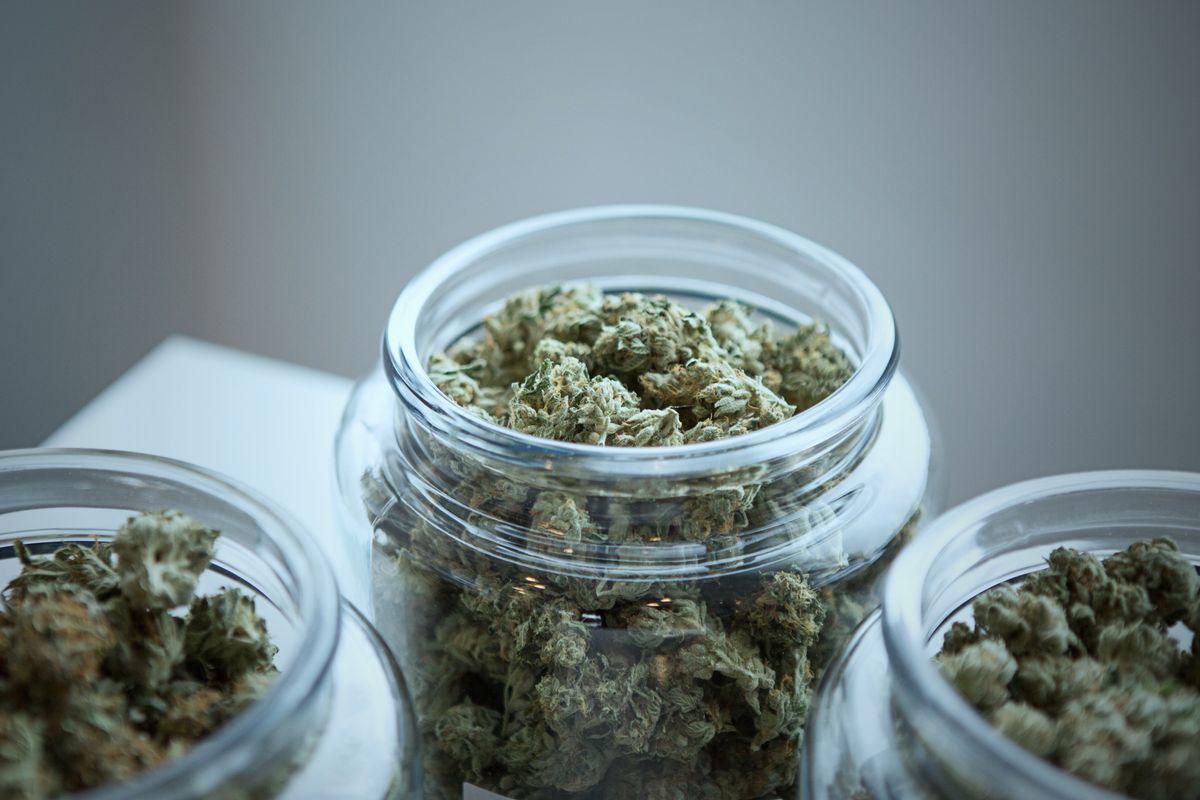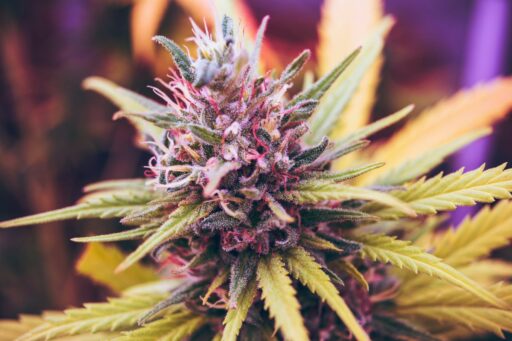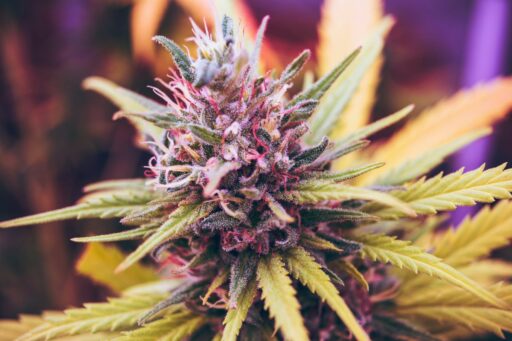The United States is witnessing a transformative era in marijuana policy, with a growing number of states embracing the legalization of medical cannabis. This article offers a comprehensive examination of the current landscape, detailing the state-by-state progression of medical marijuana legalization, the nuances of state policies, and the broader societal implications. As we explore the green wave of legalization, it’s essential to understand the complexities and the potential future trajectory of marijuana laws in the U.S.
Key Takeaways
- A total of 36 states have legalized medical marijuana, signaling a significant shift in public policy and health perspectives.
- The legal landscape of marijuana in the U.S. is a patchwork, with varying laws and enforcement practices across different states.
- Medical marijuana legalization has prompted considerable changes in healthcare, economics, and cultural attitudes towards cannabis use.
- States such as Hawaii, South Dakota, Florida, Nebraska, New Hampshire, and Pennsylvania are on the verge of passing cannabis reform laws.
- With nearly three decades since California’s Compassionate Use Act, the U.S. continues to navigate the complexities of marijuana legalization and its societal impacts.
The Green Wave: A State-by-State Analysis of Medical Marijuana Legalization

The Pioneers of Legalization: A Closer Look at Early Adopters
The journey towards the widespread legalization of medical marijuana in the United States has been a gradual one, marked by a series of significant milestones. By 2016, a majority of states had embraced the therapeutic potential of cannabis, acknowledging its benefits for patients suffering from a variety of conditions. This shift in policy began with early adopters who set the stage for others to follow.
The first states to legalize medical marijuana were California in 1996, followed by others such as Oregon, Alaska, and Washington. These pioneers crafted legislation that has served as a blueprint for subsequent states. Here is a brief overview of the early adopters:
- California (1996): Proposition 215, also known as the Compassionate Use Act
- Oregon (1998): Ballot Measure 67
- Alaska (1998): Ballot Measure 8
- Washington (1998): Initiative 692
Each of these states faced unique challenges and opposition, yet their successful passage of medical marijuana laws has paved the way for a national reevaluation of cannabis policy. The experiences of these trailblazers have provided valuable lessons on the complexities of implementing such policies effectively.
The momentum behind cannabis legalization shows no signs of abating, and the upcoming ballots could mark a pivotal moment in the ongoing transformation of cannabis policy in the United States.
Recent Advancements: States on the Cusp of Legalization
The green wave of medical marijuana legalization is reaching new shores as several states are on the verge of passing significant cannabis reform laws. Public support is at an unprecedented level, with a majority of U.S. adults now in favor of such measures.
The momentum behind cannabis legalization shows no signs of abating, and the upcoming ballots could mark a pivotal moment in the ongoing transformation of cannabis policy in the United States.
In particular, states like Florida, Ohio, and North Carolina have pending legislation that could soon alter their legal landscapes. Florida, for instance, has a significant vote scheduled for November, reflecting the broader trend of shifting legislative priorities and public opinion towards cannabis.
- States with Pending Legislation:
- Florida
- Ohio
- North Carolina
The Legal Patchwork: Variations in State Medical Marijuana Laws
The landscape of medical marijuana laws in the United States is a complex web of regulations that differ significantly from one state to another. This variation encompasses how cannabis is produced, distributed, and consumed, as well as the specific conditions it may be prescribed for.
- No two states have identical cannabis laws, creating a patchwork of policies across the country.
- States have different regulations for medical versus recreational cannabis, with distinct rules regarding possession, age limits, and consumption.
- Business compliance in the cannabis industry involves navigating licensing and banking restrictions, which vary by state.
The intricacies of state-specific cannabis laws present a unique challenge for businesses and consumers alike, emphasizing the need for careful navigation of the legal landscape.
Cross-state disparities in marijuana regulations are evident in the strictness of licensing requirements, which can include application and license fees, minimum levels of financial capital, or in-state residency among the principal owners. The degree of "medicalization" of state regulations, or their resemblance to pharmaceutical medications, also varies, affecting the availability and distribution of medical marijuana.
Navigating the Legal Nuances: Understanding State Marijuana Policies

Medical vs. Recreational: Distinguishing the Legal Categories
Understanding the distinction between medical and recreational cannabis is critical. Medical cannabis, often subject to stricter regulations, requires a doctor’s recommendation, whereas recreational use is more broadly accessible to adults.
In several states, the use of recreational cannabis has been legalized, allowing anyone over the age of 21 to make purchases. Unlike medical cannabis, recreational purchases may be exempt from sales and use tax, subject to different tax regulations.
For consumers, knowing the legalities of cannabis use is essential. This includes being aware of age restrictions, possession limits, and the legality of public consumption.
Specific to medical marijuana, state regulations also have differed according to their "medicalization," or resemblance to regulations on pharmaceutical medications. As the landscape of legalization evolves, it’s important for consumers to stay informed about the laws in their state, especially as they pertain to the availability and use of cannabis products.
Penalties and Enforcement: A State-Specific Overview
The landscape of penalties and enforcement for cannabis laws varies significantly across states. For instance, businesses operating in the cannabis industry must navigate a complex web of regulations, which includes obtaining the necessary licenses and adhering to banking restrictions. Failure to comply can result in severe penalties, including fines and the revocation of licenses.
The regulatory burden on licensed businesses often leads to the proliferation of unlicensed sellers, particularly in states with less stringent licensing laws. This creates a parallel market that operates outside the legal framework, posing challenges for law enforcement and regulators.
In states like California, the presence of unlicensed sellers has been notably high, reflecting the difficulties in policing a rapidly evolving industry. The variability among states extends to laws related to possession, age limits, and consumption, making it crucial for individuals and businesses to stay informed about the legal landscape in their respective states.
Here are some key takeaways regarding state-specific cannabis policies:
- Federal vs. State Jurisdiction: Cannabis remains illegal federally, despite state legalizations.
- Variability Among States: Regulations differ widely, affecting possession, age limits, and consumption.
- Medical and Recreational Distinctions: States have distinct rules for medical and recreational use.
- Business Compliance: Licensing and banking restrictions present significant hurdles for cannabis businesses.
The Role of Public Opinion in Shaping Marijuana Legislation
Public opinion has played a pivotal role in the legalization of medical marijuana across various states. The transformation in public perception is not merely a change in opinion; it represents a deeper cultural evolution. This evolution has been instrumental in influencing behaviors, laws, and everyday life. Legislative changes have both followed and fueled these cultural shifts, further legitimizing the use of marijuana.
The legalization of marijuana has undeniably altered the cultural fabric of society. A growing acceptance is reshaping social norms, which is not just anecdotal but is reflected in the data collected from various polls and research studies. For instance, a title from a recent article states, ‘Legalizing Marijuana for Medical, Recreational Use Largely Favored,’ and the snippet from the article indicates that ‘Americans largely favor legalization of the drug, including 57% who say it should be legal for both medical and recreational use.’
The portrayal of cannabis in media and entertainment has evolved, often reflecting a more normalized view. This, in turn, has had a significant impact on public opinion and consequently on the legislative process.
As the debate continues, some senators have urged the Biden Administration to deschedule marijuana from the Controlled Substances Act, highlighting the urgency and the shifting attitudes towards cannabis at the federal level.
The Societal Impact of Medical Marijuana Legalization

Healthcare Implications: The Therapeutic Use of Cannabis
The therapeutic use of cannabis is a critical aspect of the medical marijuana debate. Research suggests that cannabis may modestly reduce pain in individuals with various conditions, including nerve damage, cancer, multiple sclerosis, and rheumatoid arthritis. Additionally, it has been noted to reduce muscle spasms, offering relief to those who suffer from such involuntary movements.
The potential of cannabis as a substitute for opioids is a significant area of interest. While the debate continues, some populations, such as veterans, are exploring cannabis as an alternative for pain management and psychiatric disorders.
Experts emphasize the need for responsible cannabis use, particularly among young adults under 25, due to the unpredictable and potentially harmful effects on the developing brain. As legalization spreads, healthcare providers are seeking better information to guide patients on dosing and interactions with other medications.
Economic Effects: The Financial Upside of Legalization
The legalization of medical marijuana has ushered in a green rush of economic activity. Job creation has surged, with roles sprouting up across cultivation, distribution, and retail sectors. This growth is not just limited to direct cannabis-related jobs but also extends to ancillary services such as legal, marketing, and financial services.
Tax revenue from cannabis sales has injected substantial funds into state coffers, supporting public services and infrastructure projects. The following table highlights the financial impact in states where medical marijuana is legal:
| State | Tax Revenue (in millions) | Jobs Created |
|---|---|---|
| State A | $150 | 10,000 |
| State B | $200 | 15,000 |
| State C | $250 | 20,000 |
The balance between capitalizing on economic opportunities and addressing potential market pitfalls is crucial for the long-term viability of the legalized cannabis sector.
Investment in the cannabis industry has also seen a significant uptick, with both private and public funds flowing into research and development, as well as commercial ventures. Business opportunities abound, from innovative product development to international trade. However, the industry must navigate regulatory complexities and market saturation to ensure sustainable growth.
Cultural Shifts: Changing Attitudes Towards Marijuana Use
The transformation in public perception of marijuana is a testament to the cultural evolution sweeping across the United States. Public opinion polls consistently show an upward trend in the acceptance of marijuana use, reflecting a shift in societal norms and behaviors. This change is not only observed in the general populace but also mirrored in the media and entertainment industries, where the portrayal of cannabis has become increasingly normalized.
Legislative changes have both followed and fueled these cultural shifts, further legitimizing the use of marijuana. The interplay between public sentiment and lawmaking is evident, as policy adjustments often echo the prevailing attitudes towards cannabis. The legalization movement has, in turn, influenced public perception, creating a feedback loop that continues to drive the cultural evolution.
The transformation in public perception is not merely a change in opinion; it represents a deeper cultural evolution that is
influencing behaviors, laws, and everyday life.
The Future of Medical Marijuana in the United States

Pending Legislation: States to Watch in the Coming Years
As the United States continues to navigate the complex terrain of marijuana legalization, several states are emerging as key battlegrounds with pending legislation that could significantly alter the national landscape. Florida, Ohio, and North Carolina stand at the forefront of this legislative push, with each state preparing for critical votes that may pave the way for broader acceptance and integration of medical marijuana.
The outcomes of these legislative efforts and ballot initiatives will likely have a profound impact on national consumption patterns and the legal landscape.
In Florida, a significant vote is scheduled for the November 2024 General Election, reflecting a broader trend of shifting legislative priorities and public opinion towards cannabis. Stakeholders and observers alike are advised to keep a close watch on these developments:
- Florida: Awaiting a pivotal vote in November 2024.
- Ohio: Legislative discussions are ongoing, with potential for advancement.
- North Carolina: Debates continue as the state considers joining the green wave.
The ripple effects of these legislative changes are expected to be far-reaching, influencing everything from healthcare to the economy. As such, the progress in these states is not just a local matter but a bellwether for the nation’s evolving relationship with cannabis.
The Federal Stance: Implications for Nationwide Policy
The federal government’s position on marijuana remains a pivotal factor in the national discourse on cannabis policy. Federal legislation pertaining to cannabis reform now commands significant resources and attention in Congress. This shift reflects a broader transformation in public and political attitudes towards marijuana.
As the debate continues, some senators have taken a bold stance, urging the Biden Administration to swiftly deschedule marijuana from the Controlled Substances Act.
Federal law impacts various aspects of American life, including workplace drug policies. Companies under federal jurisdiction are required to maintain anti-drug policies in compliance with federal regulations, which can conflict with state laws where marijuana has been legalized.
The Department of Justice has instructed federal prosecutors to focus on cases involving violence or other illegal activities, rather than targeting individual patients, indicating a more nuanced approach to enforcement.
Innovation and Research: The Next Frontier in Medical Cannabis
As the medical cannabis industry evolves, innovation and research are becoming increasingly pivotal. The passage of the Medical Marijuana and Cannabidiol Research Expansion Act in 2022 marked a significant milestone, setting the stage for enhanced scientific scrutiny and understanding of cannabis’s therapeutic potential.
The Journal of Cannabis Research, the highest ranked fully open access journal in the field, is at the forefront of disseminating cutting-edge findings. Its Editorial Board, with expertise in every aspect of cannabis, ensures that the research community and medical providers are well-informed.
The ultimate goal is to arm healthcare professionals with robust data, enabling them to guide patients with more accurate dosing and knowledge about drug interactions.
The legalization of medical cannabis has also had a profound impact on market dynamics, effectively reducing reliance on the black market. This shift not only improves patient safety but also fosters a regulated environment conducive to research and development.
As we look to the future, the synergy between community collaboration and progressive policies will be essential in harnessing the full potential of medical cannabis.
Conclusion
As we conclude our exploration of the current landscape of medical marijuana legalization in the United States, it is evident that the nation is undergoing a significant transformation. With 36 states and the District of Columbia having enacted laws to legalize medical cannabis, and several others on the cusp of reform, the green wave is unmistakably sweeping across the country. This shift reflects a broader societal acceptance and an acknowledgment of the therapeutic benefits of cannabis. However, as the legal status of marijuana continues to evolve, it is imperative to remain informed about the implications for public health, legal systems, and social dynamics. The journey towards widespread legalization is far from over, but the current trajectory suggests a future where medical marijuana is accessible to those in need, with responsible regulation and an informed public.
Frequently Asked Questions
How many states have legalized medical marijuana as of 2024?
As of 2024, 38 states have legalized medical marijuana, allowing individuals to access cannabis for therapeutic purposes.
What was the first state to legalize medical marijuana?
California was the first state to legalize medical marijuana with the passage of the Compassionate Use Act in 1996.
Are there any states considering the legalization of recreational marijuana?
Yes, several states including Hawaii, South Dakota, Florida, Nebraska, New Hampshire, and Pennsylvania are poised to pass medical or recreational cannabis legalization and reform laws.
What is the public opinion on marijuana legalization in the U.S.?
Public support for cannabis legalization has reached an all-time high, with 70% of U.S. adults now favoring legalization.
What are the penalties for violating marijuana laws in the U.S.?
Penalties for violating marijuana laws can vary by state, but may include fines, imprisonment, or other legal consequences.
How has the legalization of marijuana affected consumption patterns in the U.S.?
The legalization of marijuana has altered legal frameworks and consumption habits, with a reported 62 million Americans using cannabis in 2023.





